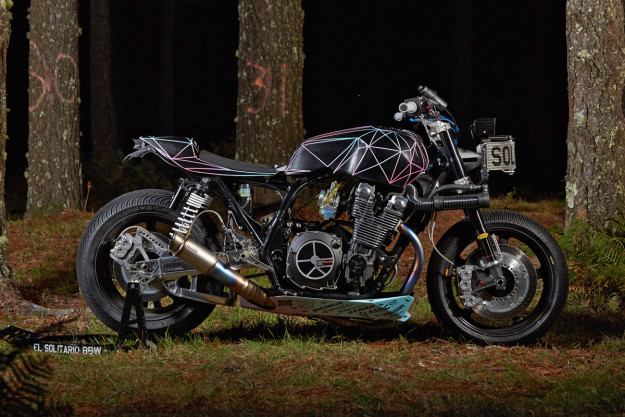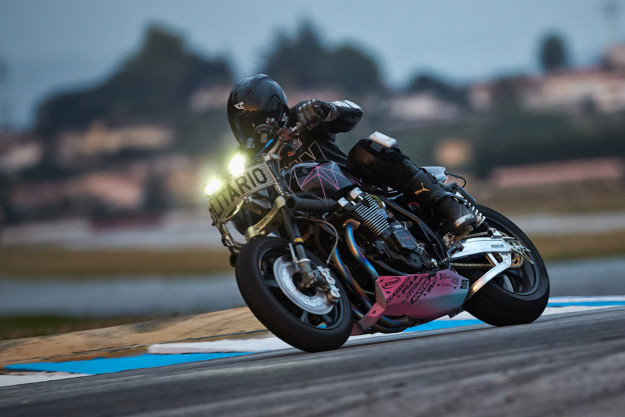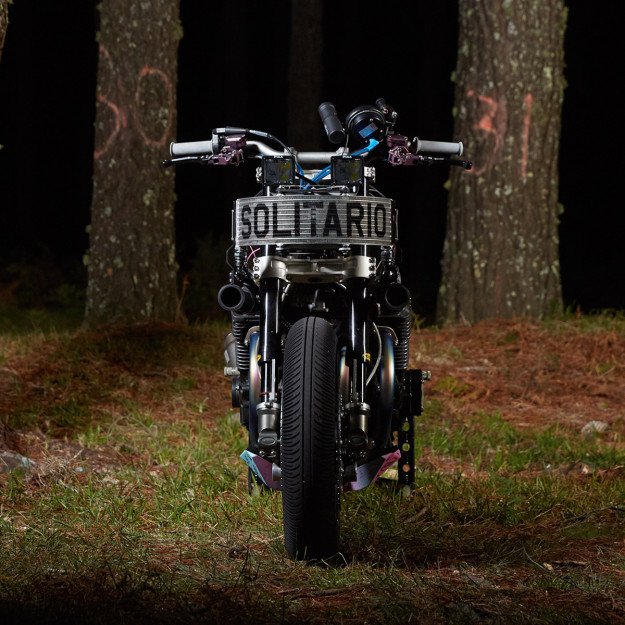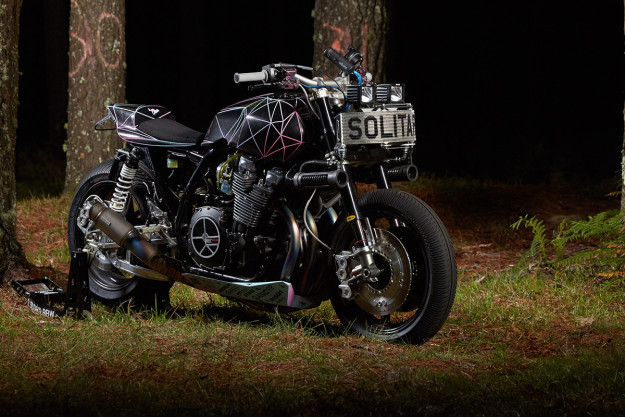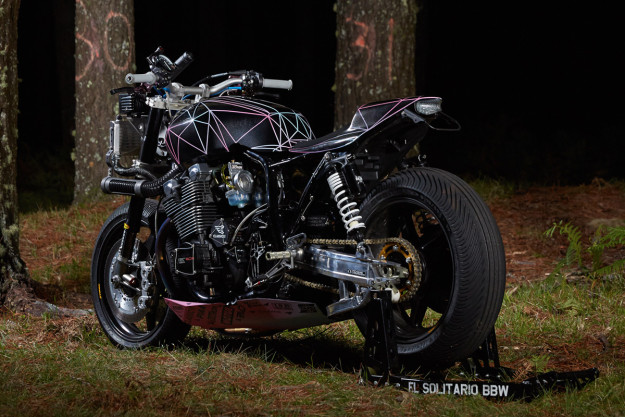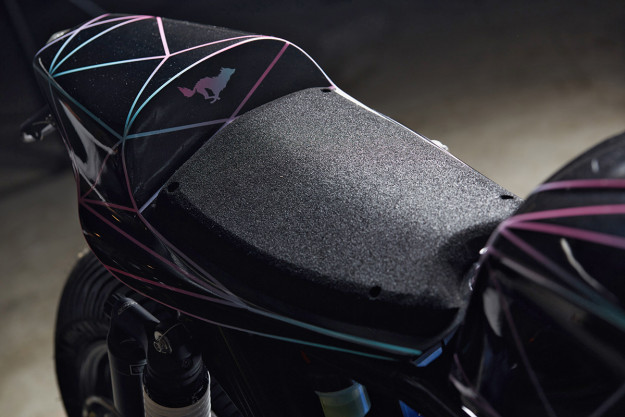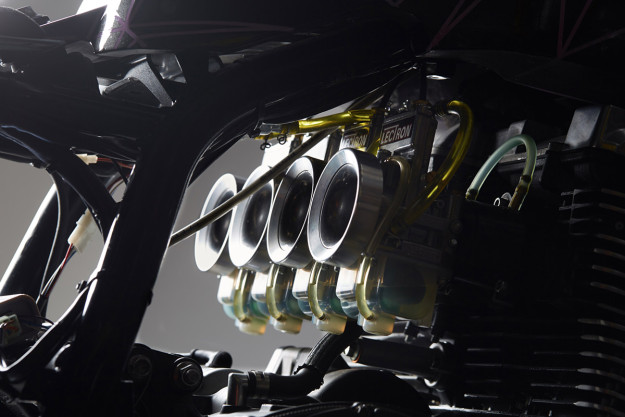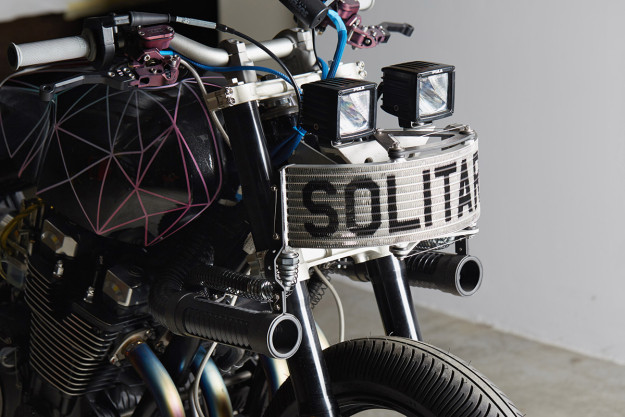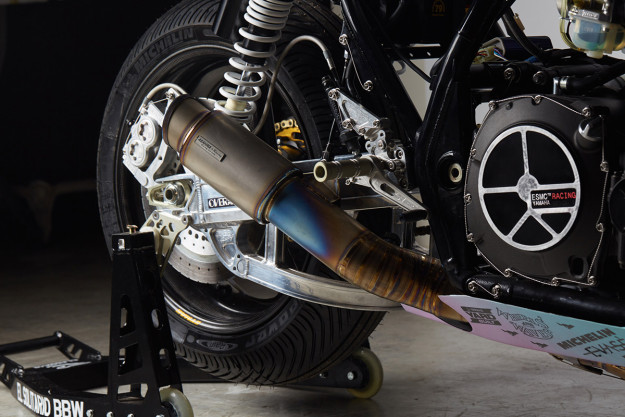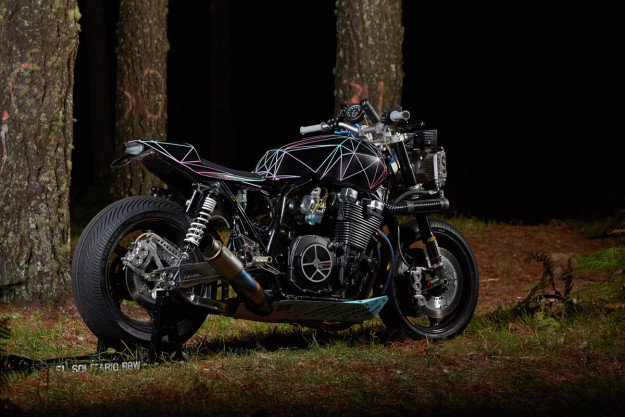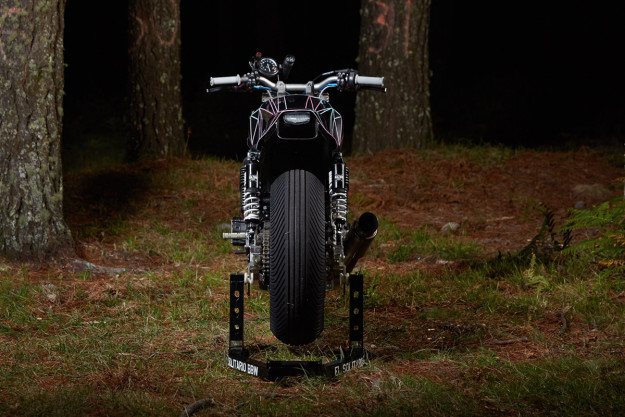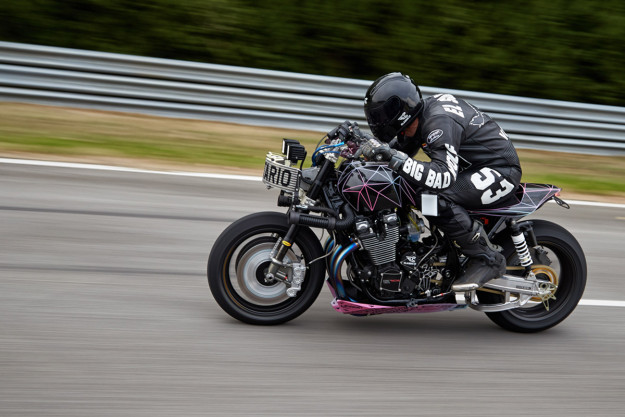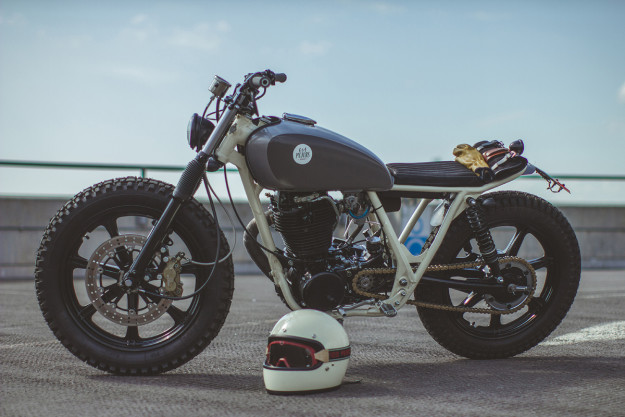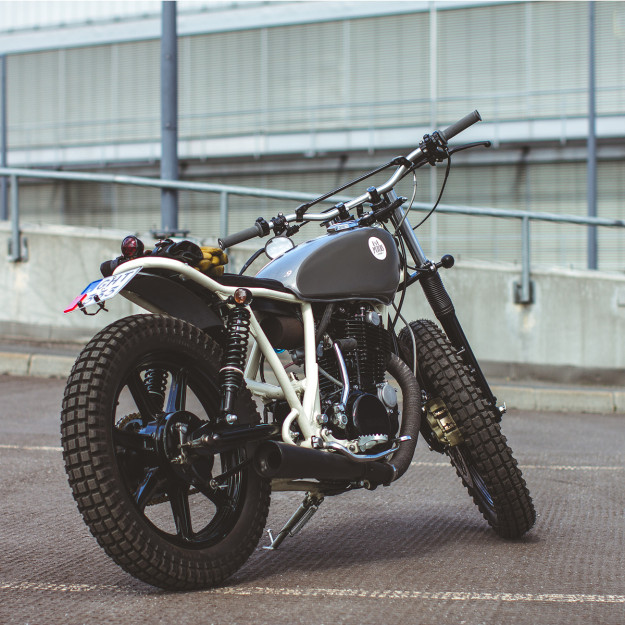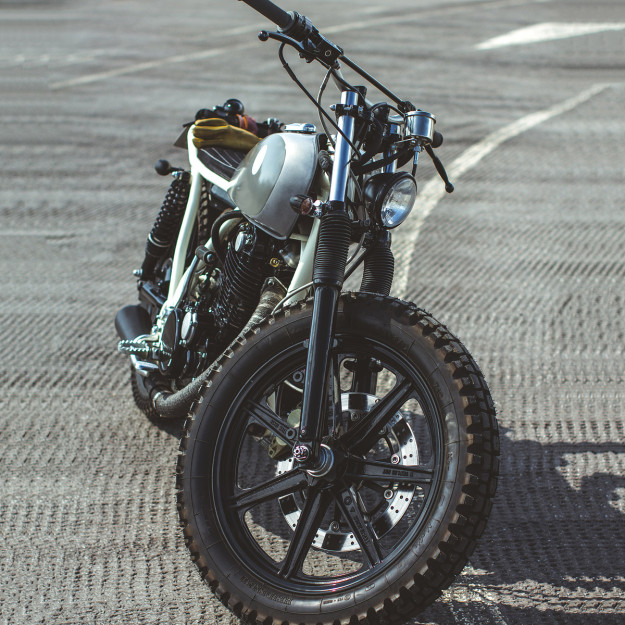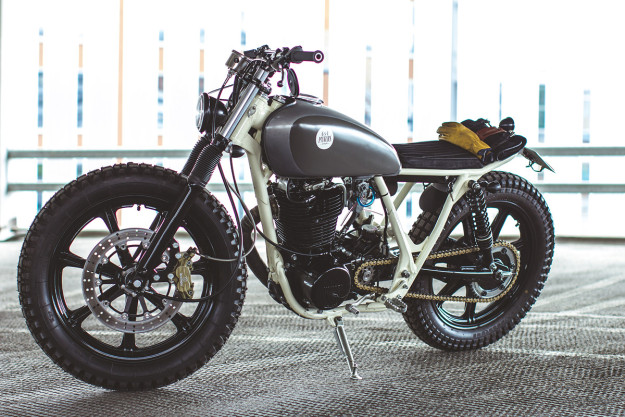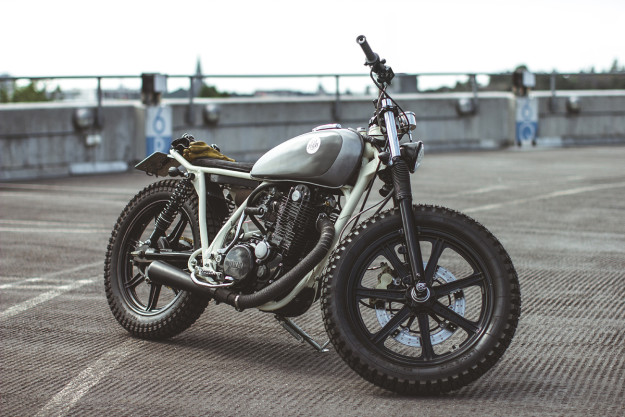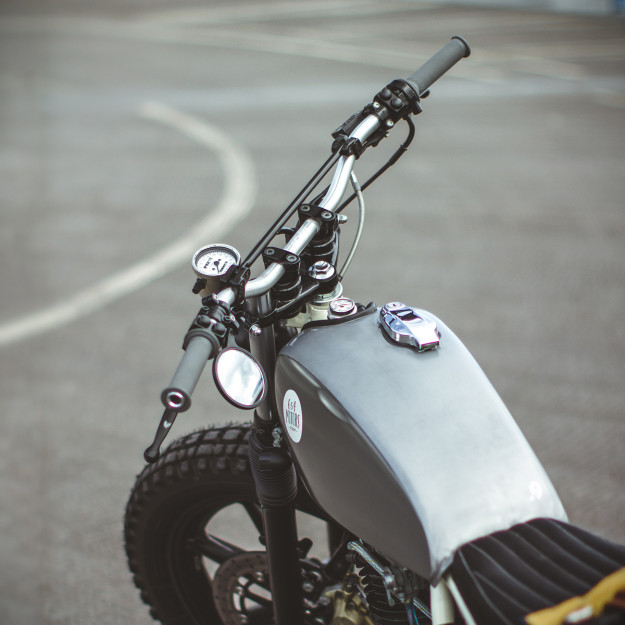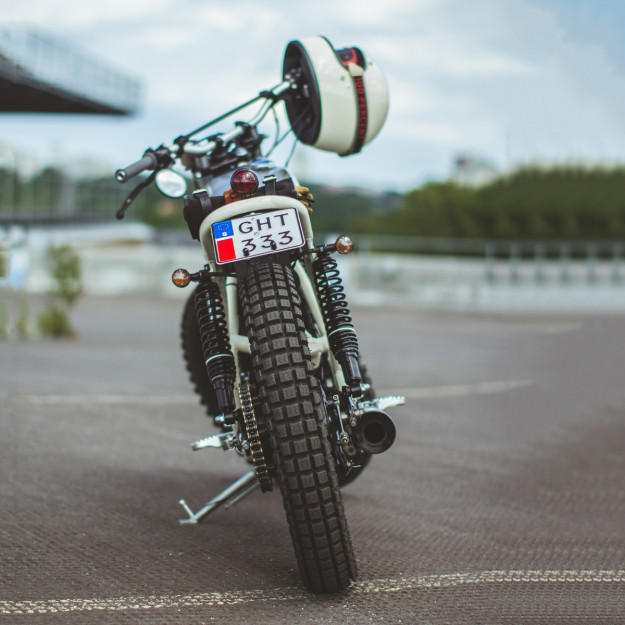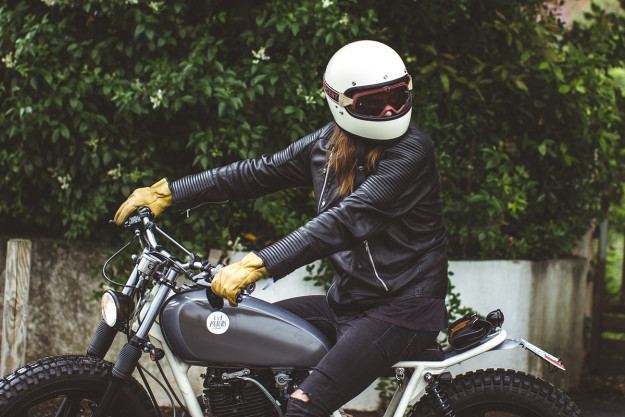It takes a brave man to commission a bike from El Solitario: founder David Loner Borras is famed for his wayward, mischievous intelligence. And his small crew of Galician ‘cannibals,’ as they describe themselves, build bikes that incite controversy. Two years ago, El Solitario wrapped a BMW R nineT in stainless steel rods, creating the world’s first ‘Bōsōzoku-Chopper-Racer.’ The reaction from the interwebs was intense, to say the least. But that didn’t stop Yamaha Europe product manager Shun Miyazawa from knocking on Borras’ door earlier this year.
Miyazawa wanted El Solitario to oversee the final Yard Built XJR1300 of 2015, celebrating 20 years of the iconic street machine. The result is a race-inspired track monster that lives up to its name, ‘Big Bad Wolf.’
BBW broke cover for the first time at the Glemseck 101 festival in Germany last month, lining up on the drag strip. The goal: to end the reign of defending sprint champion Séb Lorentz and his famous Lucky Cat Garage Sprintbeemer.
Despite the transition from street machine to pure race bike, El Solitario stayed true to the Yard Built ethos: there’s no frame cutting or welding on Big Bad Wolf. But that didn’t make the project easy. “El Solitario is not familiar with 4-cylinder bikes,” says David Borras. “For months we tried to answer the question: How could we take it further?”
The only answer was to focus on performance and technology. “Both were unknown and expensive paths for us. We are motorcycle poets, not engineers.” Borras pulled together a tight-knit crew of specialists to work with his mechanics, led by Mauro Abbadini of Madrid-based Classic Co. “As technical director of the build, he brought with him the confidence and know-how of a veteran racer.”
The frame, tank and bars were left alone, but almost everything else on this XJR1300 is custom made. Wet weight is down by a whopping 25 per cent, from 245 kilos to 183 kilos (403 pounds). The motor was blueprinted, and the heads ported and flowed—the intake port flow is up by 50%. Compression is up too, from 9.7:1 to 10.7:1. The combustion chambers have been reshaped and the squish areas increased. The rods were reinforced with titanium bolts and the crankshaft was rebalanced.
Fuel is now metered by state-of-the-art Lectron 42 carburetors, developed specifically for the XJR1300 on Lectron’s flow bench, and a Dynatek programmable ignition handles the spark. This XJR1300 now records 148 hp at the rear wheel, which lifts the power-to-weight ratio into sportbike territory. The Big Bad Wolf sits somewhere between the BMW S1000 RR and the Ducati 1299 Panigale. There’s a smattering of carbon fiber. It’s present in the tail section and belly pan fabricated by Classic Co., and in the Dymag wheels—which fit not only the BBW, but also a stock XJR1300.
For the metalworking, El Solitario sent their designs to Acke Rising of ISR in Sweden. He’s turned out beautiful triple trees, disc rotors and an exquisite rear brake caliper bracket. As a bonus, Acke popped a few more ISR parts into the return mail package, including hand controls and brake calipers—six pistons at the front, and four pistons at the back.
The forks and shocks are just as trick, being a joint effort from K-Tech Suspension and Novatech. For the exhaust system, El Solitario turned to Asahina Racing in Japan, who fabricated a custom titanium number. If you’ve got an XJR1300 in your own garage and a few readies to spend, you’ll be glad to know it’ll fit a stock XJR1300 too.
After putting so much work into the engine, it was critical to keep it cool. Taleo Racing of Madrid created the semi-circular oil cooler, using the same technology they supply to MotoGP teams. Then EMD of France machined a set of aluminum motor covers (which XJR1300 owners will soon be able to add to their shopping lists too). A TWM custom gas cap sets off the tank, and an aluminum swingarm and rearsets from Over Racing finish off the rear. Electrics are routed through a Motogadget m-Unit, activated by a digital ignition m-Lock with remote RFID tech.
El Solitario bikes always have a huge visual impact, but the Wolf introduces a new element of style and restraint. We love the slender geometrical pinstriping—the work of London artist Death Spray Custom. It’s a new approach for David Borras and crew, and they’ve nailed it at first attempt. “The timing was just right,” Miyazawa says. “We believed they were ready to push out in a new direction and break new ground.”
“We wanted to challenge them to show a different side to El Solitario.”
An even bigger challenge came at Glemseck, in the race to unseat Séb Lorentz’s all-conquering Sprintbeemer. The latest version of that machine, you may remember, has race-spec internals in its R100RS motor and a NOS system. With Mauro Abbadini on board, the Big Bad Wolf destroyed all-comers in the heats and finally faced up against the mighty Sprintbeemer. Everything was going to plan. Then disaster struck—but for the Sprintbeemer, which blew its ignition on the start line.
An interlude was agreed to allow Lorentz time to repair his BMW. Then the bikes lined up again … and The Big Bad Wolf killed the Lucky Cat. But we can’t imagine the friendly rivalry between Lorentz and Borras will die down. After all, cats have nine lives. Here’s to next year, and a rematch between these two magnificent machines.
First published by www.bikeexif.com/
